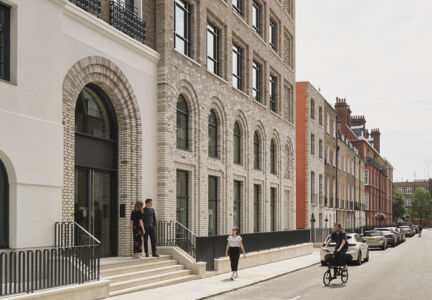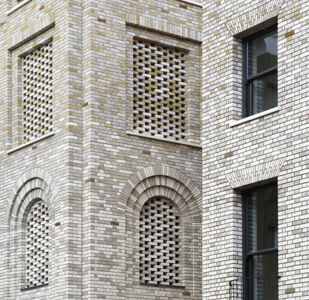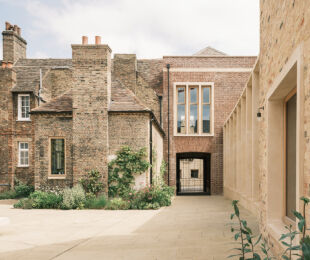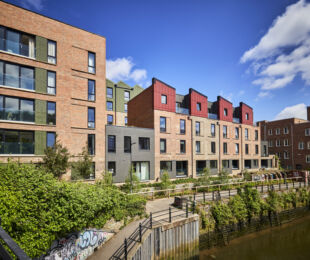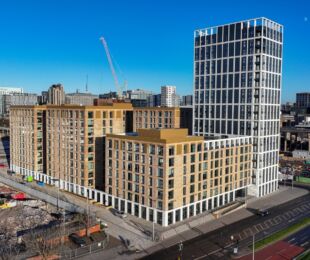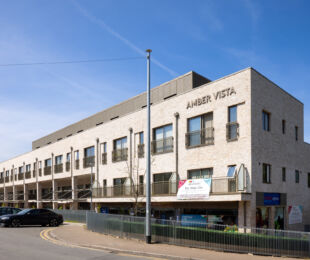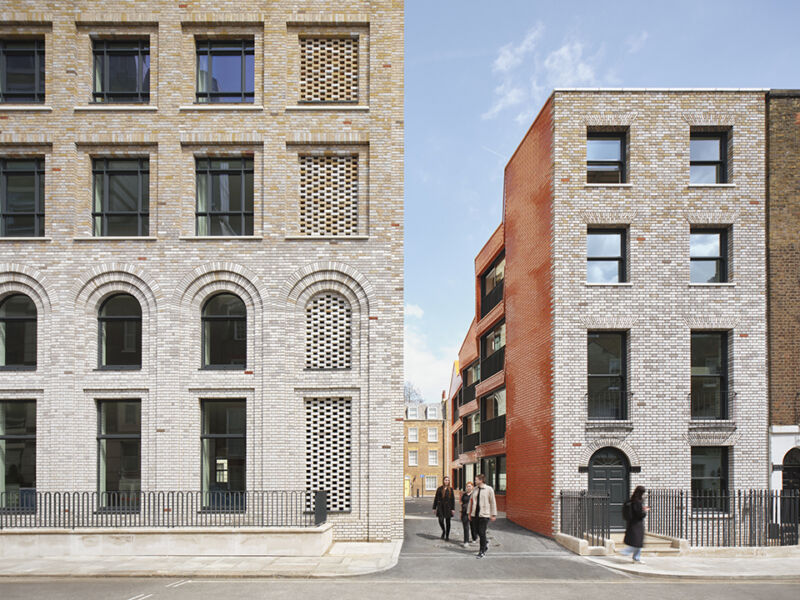
Tucked within one of London’s most distinguished neighbourhoods, Marylebone Place is a quietly confident reinvention of a 1930s neo-Georgian office building. Completed in 2023, the development, designed by Fletcher Priest Architects for Beltane Asset Management, transforms what was once Marylebone House into a modern workplace that sits harmoniously within a predominantly residential conservation area.
At the heart of the project lies an enduring respect for the original 1938 design by Stanley Gordon Jeeves. Around 85% of the existing structure was retained and adapted, an approach that not only preserved the building’s character but also exemplified circular economy principles by significantly reducing embodied carbon.
Restoring and Reimagining the Façade
The building’s traditional red and yellow brick façades were carefully cleaned and restored, revealing the richness of the original masonry. To the rear, a 1960s curtain-wall extension was replaced with an innovative precast brick façade system fabricated by Techcrete in Brigg. This new intervention employs a remarkable colour gradient composed of seven distinct clay brick tones, meticulously selected to reflect the surrounding Marylebone Conservation Area.
From wienerberger’s soft Smeed Dean London Stock bricks, that echo nearby Georgian terraces, to Bulmer Brick & Tile’s deeper Bulmer Red Rubbers referencing the grandeur of Bryanston Mansions, every detail has been carefully considered.
Adding a contemporary balance, Michelmersh’s Charnwood Cathedral Grey bricks, introduce subtle tonal shifts within the upper levels of the façade gradient. The interplay between red, yellow and grey hues creates a modern visual harmony that references both the history and evolving character of Marylebone.
The gradient, shifting subtly from light at the base to darker shades above, was developed using advanced generative design techniques. Each brick type was catalogued and positioned with precision for off-site fabrication, before being assembled on site with exceptional accuracy. The keyed brick movement joints conceal seams between the precast panels, ensuring a seamless appearance and high-quality finish.
This prefabricated approach not only enhanced build efficiency but also demonstrated how traditional materials, when paired with modern techniques, can produce buildings of lasting quality, low maintenance, and contextual richness.
The Vibrant Mews Building
A striking new mews building forms a key part of the redevelopment. Constructed from glulam and cross-laminated timber, it is clad in vivid orange glazed brickwork, manufactured from natural volcanic lava stone and glazed in France using time-honoured firing methods. The result is a façade of remarkable vibrancy, drawing inspiration from Marylebone’s industrial and railway heritage.
Its distinctive toothed brick corners pay tribute to Swedish architect Sigurd Lewerentz, whose mastery of brickwork celebrated its expressive potential. The elevations that face Knox Street and Wyndham Street return to traditional hand-laid brickwork, mirroring the colour gradient of the precast panels and maintaining a crafted, human-scale presence that ties the new seamlessly to the old.
Craft, Context and Continuity
Throughout the development, brick detailing is handled with great care. Arched window openings, layered brick patterns and deep reveals lend a rich sense of depth and shadow, continuing the rhythm of Marylebone’s Georgian streetscape. This same material language extends into the building’s interiors, creating a refined, cohesive experience for occupants.
A Sustainable Future Built in Brick
Marylebone Place stands as a testament to the enduring role of clay brick in contemporary architecture. It demonstrates how the material’s adaptability, expressiveness and permanence can be harnessed to both preserve heritage and shape the modern city.
By embracing restoration over replacement, and by combining craftsmanship with innovation, the project delivers a sustainable, elegant, and deeply contextual addition to London’s urban fabric, an achievement made possible through the timeless quality of clay brick.
Brick Bulletin | Feature 274

